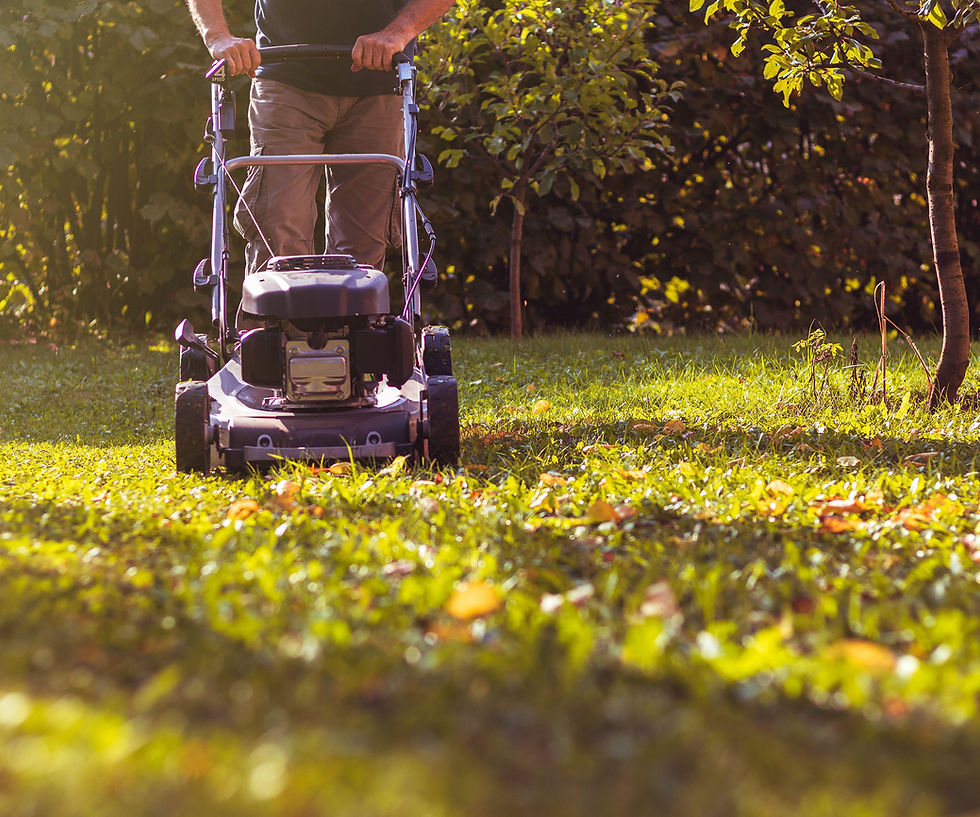When to Prune Hydrangea: A Seasonal Guide for UK Gardeners
- Eastergate Garden Maintenance

- Dec 15, 2024
- 4 min read
Updated: Dec 16, 2024
Hydrangeas are one of the most popular garden shrubs in the UK, known for their vibrant blooms and ability to transform any outdoor space. However, to keep your hydrangeas healthy and flowering year after year, knowing when to prune hydrangea plants is essential. In this guide, we’ll break down the best time to prune hydrangeas, tailored to UK gardens, and provide tips to help your plants thrive.

Why Is Pruning Hydrangeas Important?
Pruning hydrangeas not only helps maintain their shape but also encourages healthy growth and better blooms. By removing dead wood, spent flowers, and overcrowded stems, you’ll allow more light and air circulation, which reduces the risk of diseases and ensures the plant’s energy is directed towards producing vibrant flowers. Knowing when to prune hydrangea shrubs can make all the difference in achieving a garden full of stunning blooms.
Understanding the Different Types of Hydrangeas
Before you grab your secateurs, it’s important to identify the type of hydrangea you have. Different varieties require different pruning techniques and timings:
Hydrangea macrophylla (Mophead and Lacecap)
These are the most common hydrangeas in UK gardens. They bloom on old wood, meaning the flowers develop on growth from the previous year.
Hydrangea paniculata (Panicle)
Known for their cone-shaped blooms, these hydrangeas flower on new wood, meaning the blooms form on growth from the current year.
Hydrangea arborescens (Smooth)
These shrubs also flower on new wood and are valued for their large, spherical blooms.
Hydrangea quercifolia (Oakleaf)
This variety blooms on old wood and has stunning, foliage-like flowers that make them stand out in any garden.
When to Prune Hydrangeas
The timing of pruning depends on the type of hydrangea you have:

Hydrangea macrophylla (Mophead and Lacecap)
When to Prune: Late summer to early autumn (August to September) or late winter to early spring (February to March).
How to Prune: After the flowers have faded, remove the spent blooms, cutting back to just above a pair of healthy buds. Avoid cutting into the woody stems as these contain next year’s flower buds.
Hydrangea paniculata (Panicle)
When to Prune: Late winter to early spring (February to March).
How to Prune: Cut back the stems to about one-third of their height to encourage strong, new growth and larger blooms.
Hydrangea arborescens (Smooth)
When to Prune: Late winter to early spring (February to March).
How to Prune: Prune stems down to around 15-30cm (6-12 inches) from the ground to encourage vigorous growth and abundant flowers.
Hydrangea quercifolia (Oakleaf)
When to Prune: Summer, immediately after flowering.
How to Prune: Remove spent flower heads and lightly shape the plant. Avoid heavy pruning as this can impact next year’s blooms.
General Tips for Pruning Hydrangeas
Use sharp tools: Ensure your secateurs or pruning shears are clean and sharp to make precise cuts and reduce the risk of disease.
Remove dead or damaged wood: Start by cutting away any dead, damaged, or diseased stems to improve the overall health of the plant.
Step back and assess: Periodically step back to ensure you’re achieving the desired shape and not over-pruning.
Don’t panic: If you accidentally prune at the wrong time, your hydrangea may not flower as prolifically the following year, but it’s unlikely to cause long-term harm. Knowing when to prune hydrangea plants will help you avoid this issue in the future.
Key Takeaways
Pruning hydrangeas at the right time is crucial for healthy growth and abundant blooms.
Identify your hydrangea variety to determine whether it blooms on old or new wood.
Use proper pruning techniques to maintain the plant’s shape and encourage flowering.
By following these seasonal pruning tips, your hydrangeas will reward you with stunning displays that brighten your garden year after year. If you’re unsure about pruning or need professional help, our expert gardening team is here to assist. Get in touch with [Your Business Name] today for all your gardening needs.
FAQs
Can I prune hydrangeas in autumn? Yes, you can prune hydrangea varieties like Hydrangea macrophylla in autumn. Autumn pruning is typically limited to removing spent blooms and dead wood, preparing the plant for the colder months without encouraging new growth too late in the season.
What happens if I don’t prune my hydrangeas? If you don’t prune hydrangeas, they can become overgrown and produce fewer blooms. Overcrowded stems may also lead to poor air circulation, which increases the risk of pests and diseases. Regular pruning not only keeps the plant looking tidy but also ensures healthy growth and vibrant flowers.
How can I tell if my hydrangea blooms on old or new wood? To determine whether your hydrangea blooms on old or new wood, observe its flowering habits. If blooms appear on older, woody stems, it’s an old wood variety like Hydrangea macrophylla or quercifolia. If flowers form on fresh, green growth, it’s a new wood bloomer like Hydrangea paniculata or arborescens.
What tools do I need to prune hydrangeas? You’ll need clean, sharp secateurs or pruning shears to make precise cuts. For thicker branches, a pair of loppers might be necessary. Keeping your tools clean helps prevent the spread of disease.
What’s the best way to shape a hydrangea? To shape a hydrangea, start by removing dead, damaged, or crossing stems. Then, step back and trim the plant to your desired size and form, keeping in mind the natural growth habit of the variety. Avoid over-pruning to ensure the plant remains healthy and productive.
Ready to Transform Your Garden?
For expert advice and garden care services in the UK, contact us today. Let’s make your garden flourish!




Comments